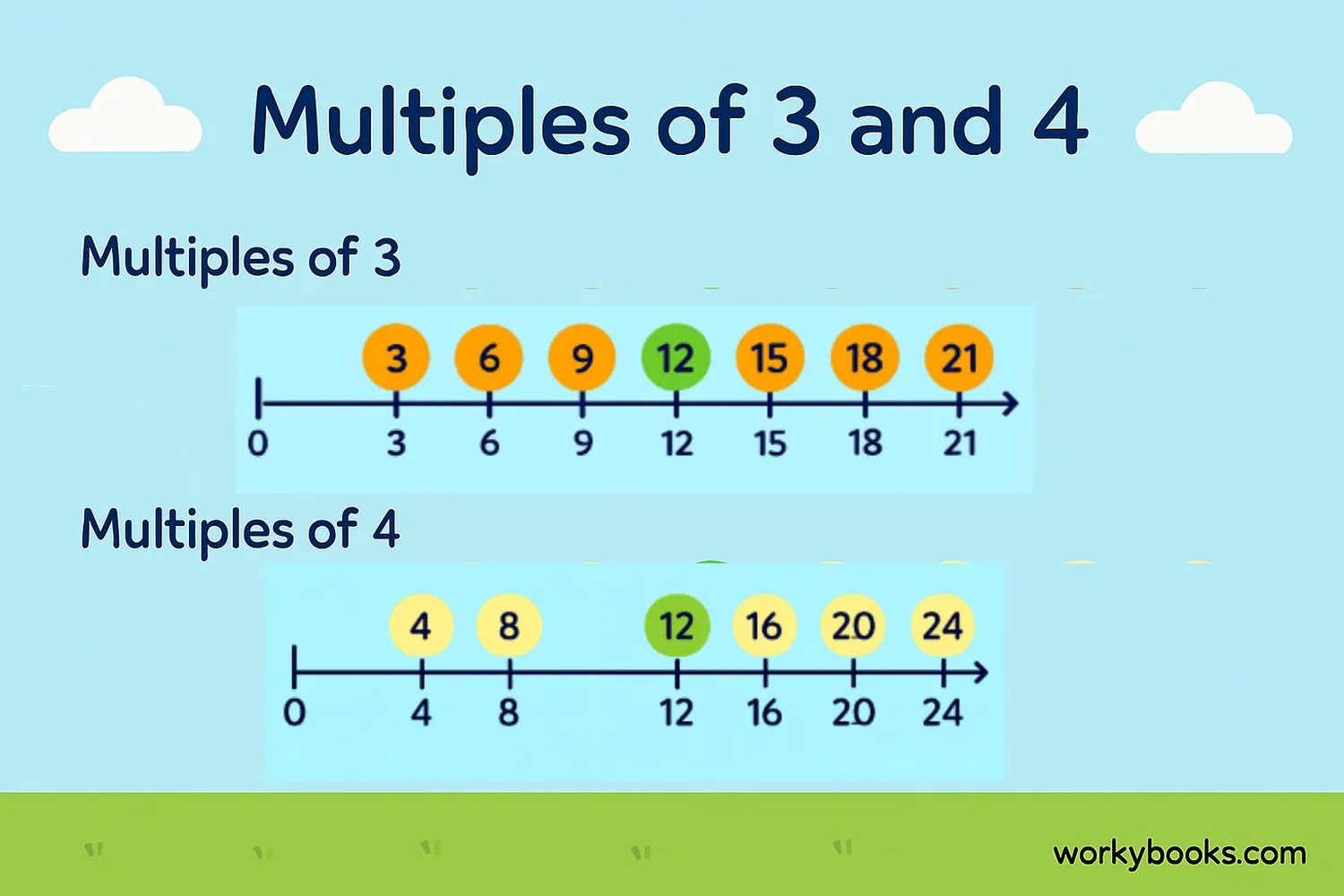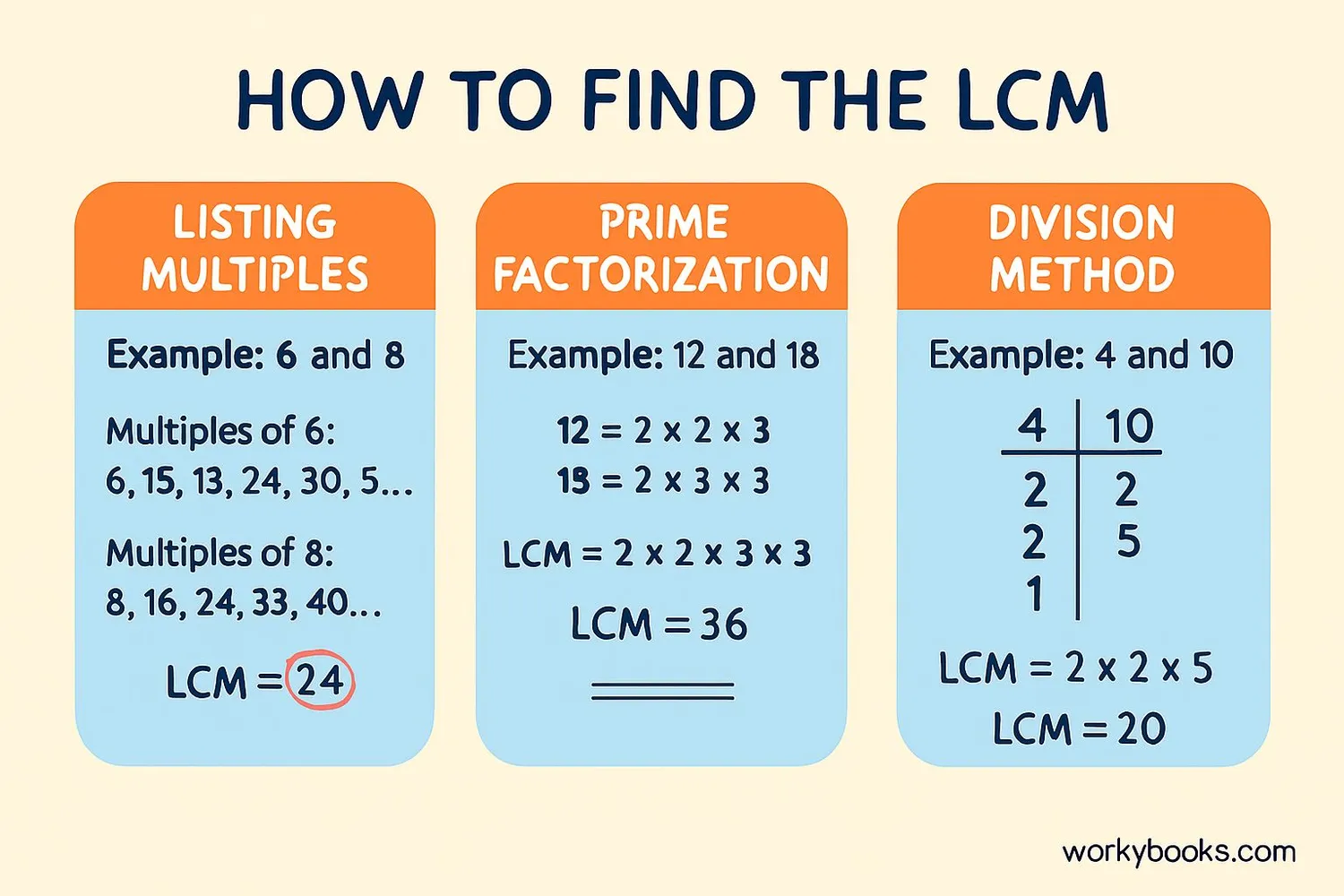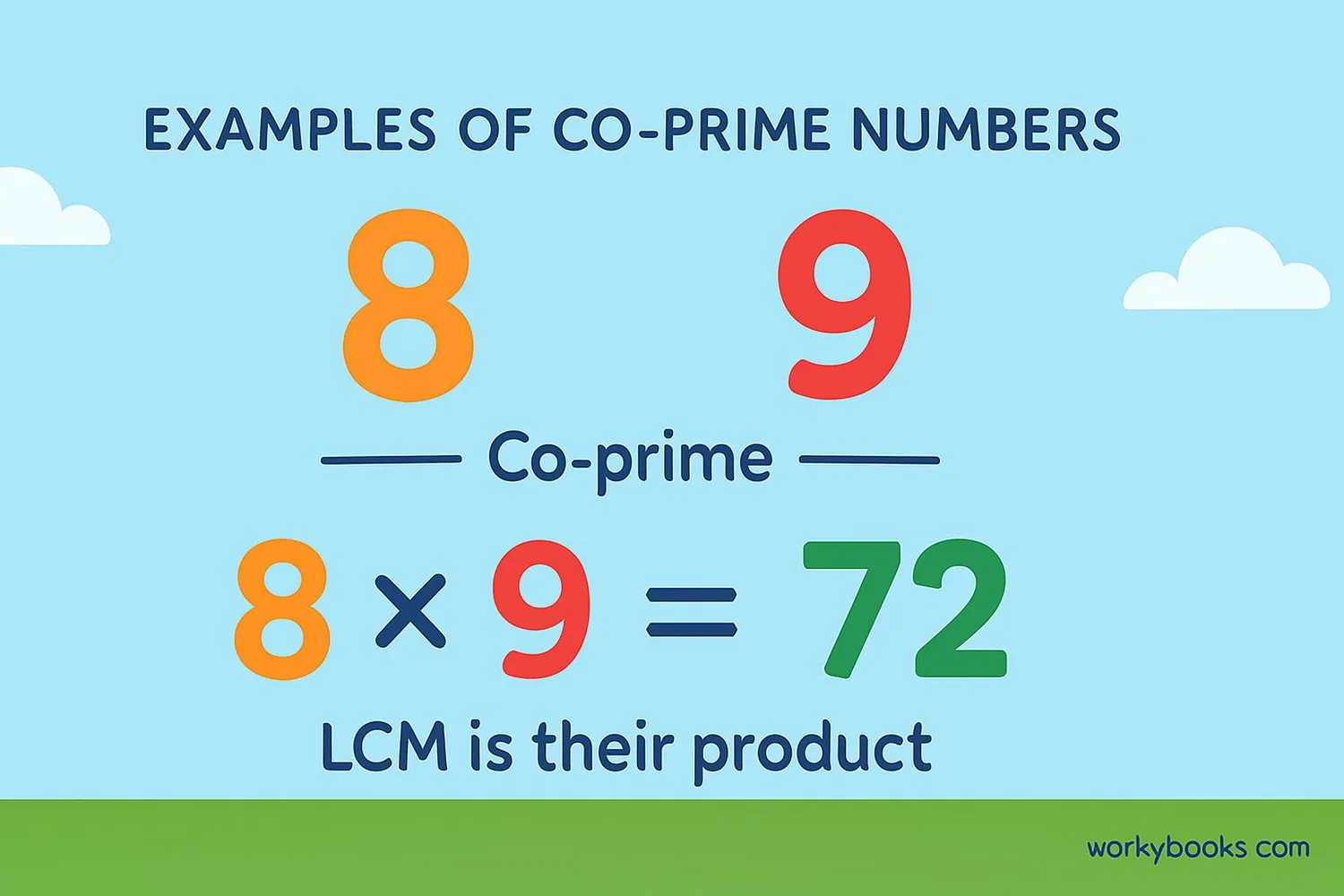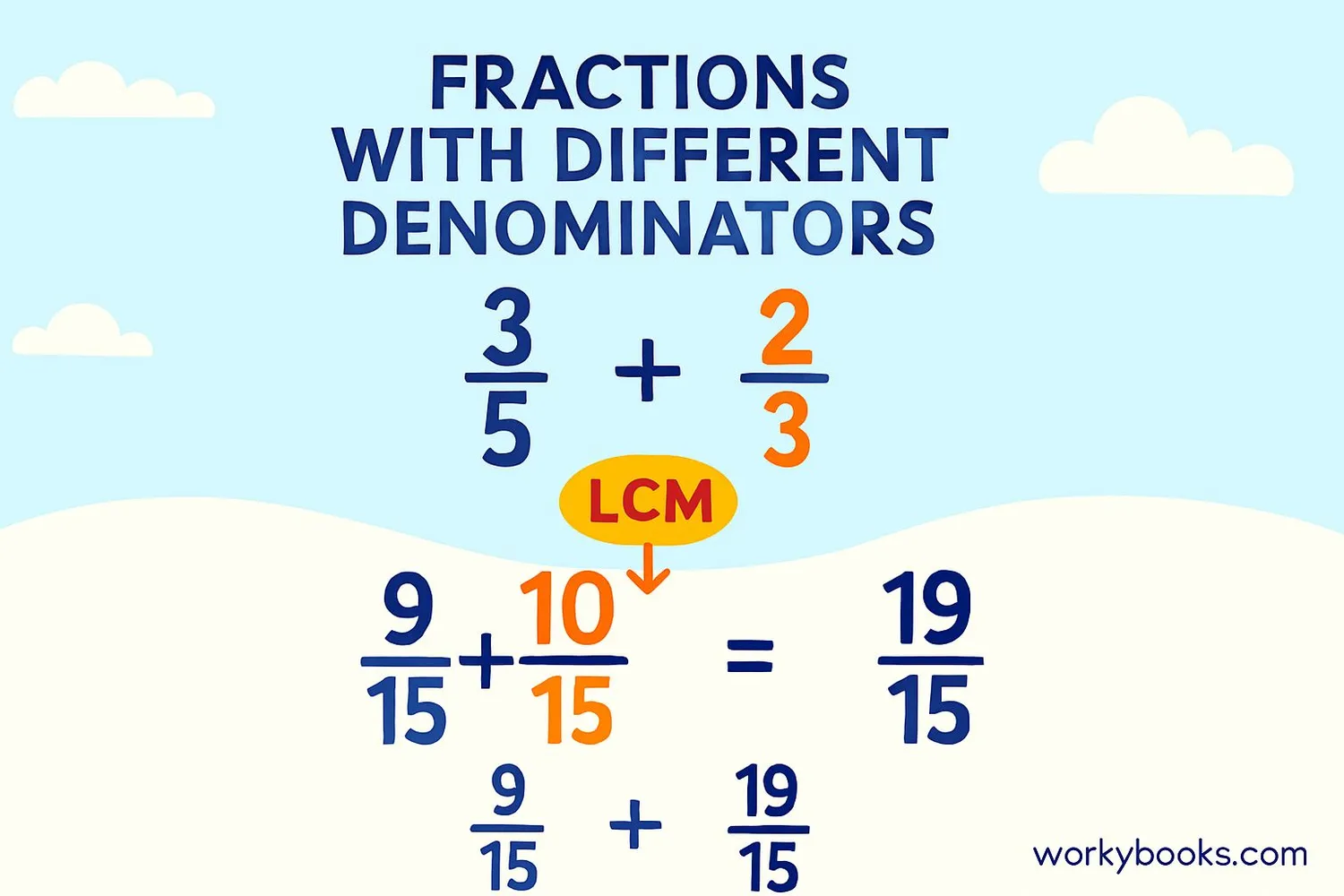Least Common Multiple - Definition, Examples, Quiz, FAQ, Trivia
Learn to find the smallest common multiple with easy explanations and practice activities
What is Least Common Multiple?

The Least Common Multiple (LCM) of two or more numbers is the smallest positive number that is a multiple of each number. It's the smallest number that all the original numbers divide into without leaving a remainder.
Think of it as the first meeting point for multiples of different numbers. For example, the multiples of 3 are 3, 6, 9, 12, 15, 18... and the multiples of 4 are 4, 8, 12, 16, 20... The common multiples are 12, 24, 36... and the smallest is 12. So the LCM of 3 and 4 is 12.
LCM helps us solve problems where we need to find when things will happen at the same time or how to combine things evenly.
Key Concept
LCM is the smallest number that is a multiple of two or more numbers. It helps us find common ground between different numbers.
Methods to Find LCM

There are several ways to find the LCM of numbers. Let's explore three common methods:
Listing Multiples Method
List the multiples of each number until you find the smallest common multiple.
Example: Find LCM of 4 and 6
Multiples of 4: 4, 8, 12, 16, 20...
Multiples of 6: 6, 12, 18, 24, 30...
First common multiple is 12 → LCM = 12
Prime Factorization Method
Break each number into its prime factors and multiply the highest power of each prime.
Example: Find LCM of 12 and 18
12 = 22 × 31
18 = 21 × 32
Highest powers: 22 × 32 = 4 × 9 = 36
LCM = 36
Division Method
Divide by common prime factors until no common factors remain, then multiply the divisors and remainders.
Example: Find LCM of 15 and 25
Divide by common factors:
5 | 15 25
| --------
3 | 3 5
| --------
5 | 1 5
| --------
| 1 1
LCM = 5 × 3 × 5 = 75
Remember
All methods give the same result! Choose the one that works best for the numbers you're working with.
LCM of Co-prime Numbers

Co-prime numbers are numbers that have no common prime factors other than 1. This means their Greatest Common Divisor (GCD) is 1. Examples include 8 and 9, or 15 and 16.
For co-prime numbers, the LCM is simply their product. This is because they share no common factors, so we multiply all their prime factors together.
Co-prime LCM Formula
When a and b are co-prime numbers
Since 8 and 9 are co-prime (no common factors except 1):
LCM(8, 9) = 8 × 9 = 72
This special relationship makes finding LCM for co-prime numbers very easy!
LCM in Fractions

LCM is especially useful when working with fractions. When adding or subtracting fractions with different denominators, we need to find a common denominator. The LCM of the denominators is the smallest possible common denominator, called the Lowest Common Denominator (LCD).
Why use LCM for fractions?
- It gives the smallest common denominator, keeping numbers manageable
- It simplifies the process of adding, subtracting, and comparing fractions
- It helps reduce fractions to their simplest form
Step 1: Find LCM of denominators 4 and 6 → LCM(4,6) = 12
Step 2: Convert fractions: 1/4 = 3/12 and 1/6 = 2/12
Step 3: Add: 3/12 + 2/12 = 5/12
Using LCM as the common denominator makes fraction operations much easier!
LCM Practice Quiz
Test your understanding with this 5-question quiz. Choose the correct answer for each question.
Frequently Asked Questions
Here are answers to common questions about Least Common Multiple:
Math Trivia
Discover interesting facts about multiples and mathematics:
Ancient LCM
The concept of LCM dates back to ancient Greek mathematics. Euclid described a method for finding the LCM in his work "Elements" around 300 BCE, making it one of the oldest mathematical algorithms still in use today.
Planetary Alignment
Astronomers use LCM to calculate when planets will align. For example, if Mars orbits every 687 days and Jupiter every 4,333 days, their LCM (about 79 years) tells us how often they appear in the same position relative to Earth.
Musical Rhythms
Musicians use LCM to create complex rhythms. When different instruments play patterns of different lengths, the LCM determines when the pattern repeats. For example, a 3-beat pattern and 4-beat pattern sync every 12 beats (LCM of 3 and 4).
Largest Calculated LCM
The largest LCM ever calculated by hand was for numbers with 20 digits. Today, computers can calculate LCM for numbers with hundreds of digits in fractions of a second, helping with cryptography and internet security.





